Nickelback Feed the Machine in This Moment Ritual Album Cover
The 20 best album covers of all time
For generations, album art has been an essential part of listening to music. The media may have changed, from vinyl to cassettes to CDs, and then recently back to vinyl again, but the imagery created to represent our favourite bands' music has continued to be an vital and vibrant element of pop culture. That, and of course, the all important music video (opens in new tab).
In this post, we salute the most iconic album art in rock history, some of which has gone on to become more famous and recognisable than the music it symbolises, and most of which has also adorned poster designs (opens in new tab) across the globe.
01. Elvis Presley (1956)
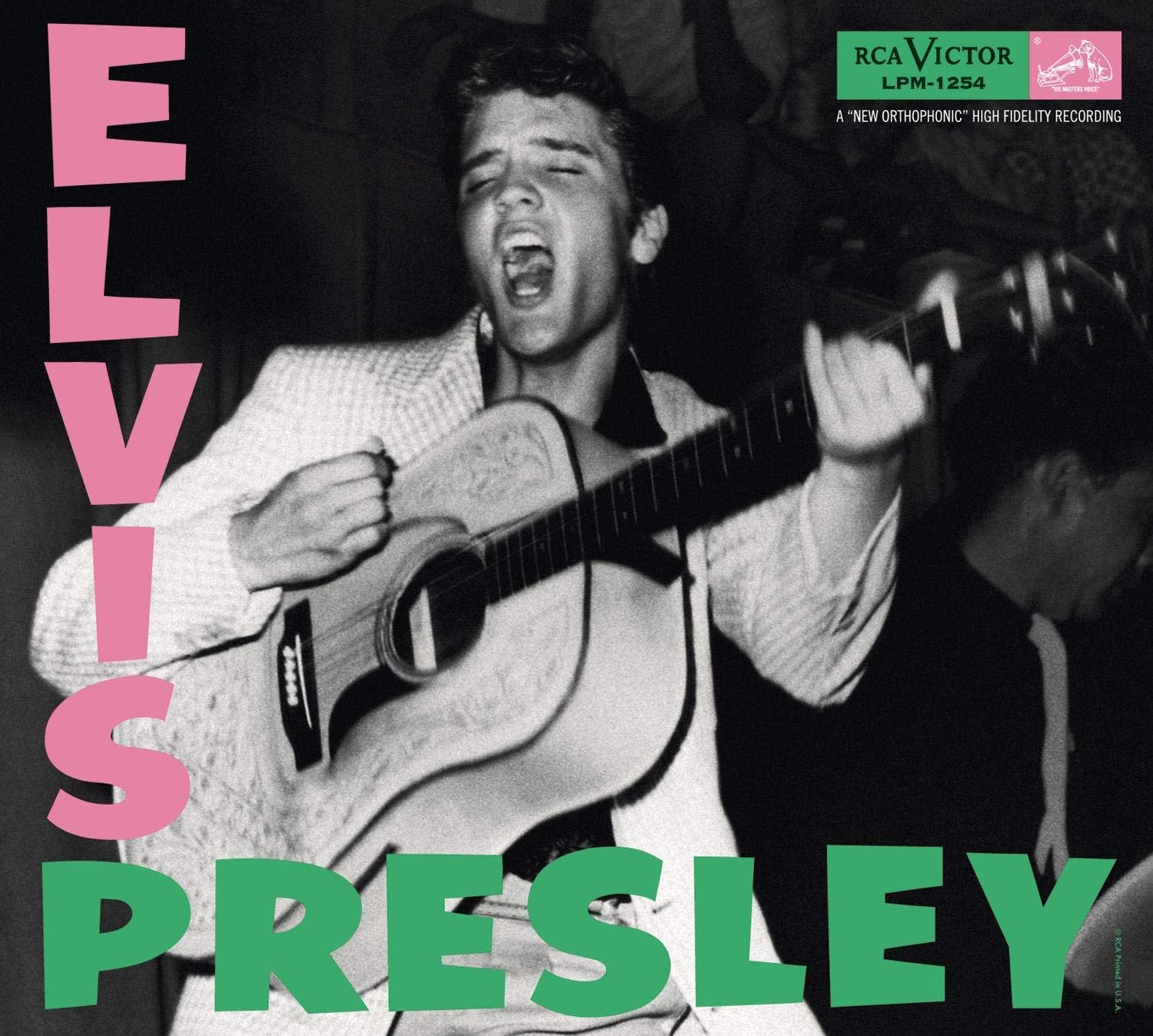
Until the arrival of Elvis, entertainers had typically been restrained and on best behaviour while on stage. But the Mississippi singer who became known as The King threw away that rulebook, thrusting his hips in an overtly sexual style and running wild with a raw, primal energy.
Ths dramatic shot, taken at the Fort Homer Hesterly Armory in Tampa, Florida by William V. 'Red' Robertson, captures him in a full, convention-defying flow. With its brash and colourful lettering, the design of this iconic cover was later echoed by British punks The Clash for the cover of their 1979 album, London Calling.
02. Sgt Pepper's Lonely Hearts Club Band by The Beatles (1967)
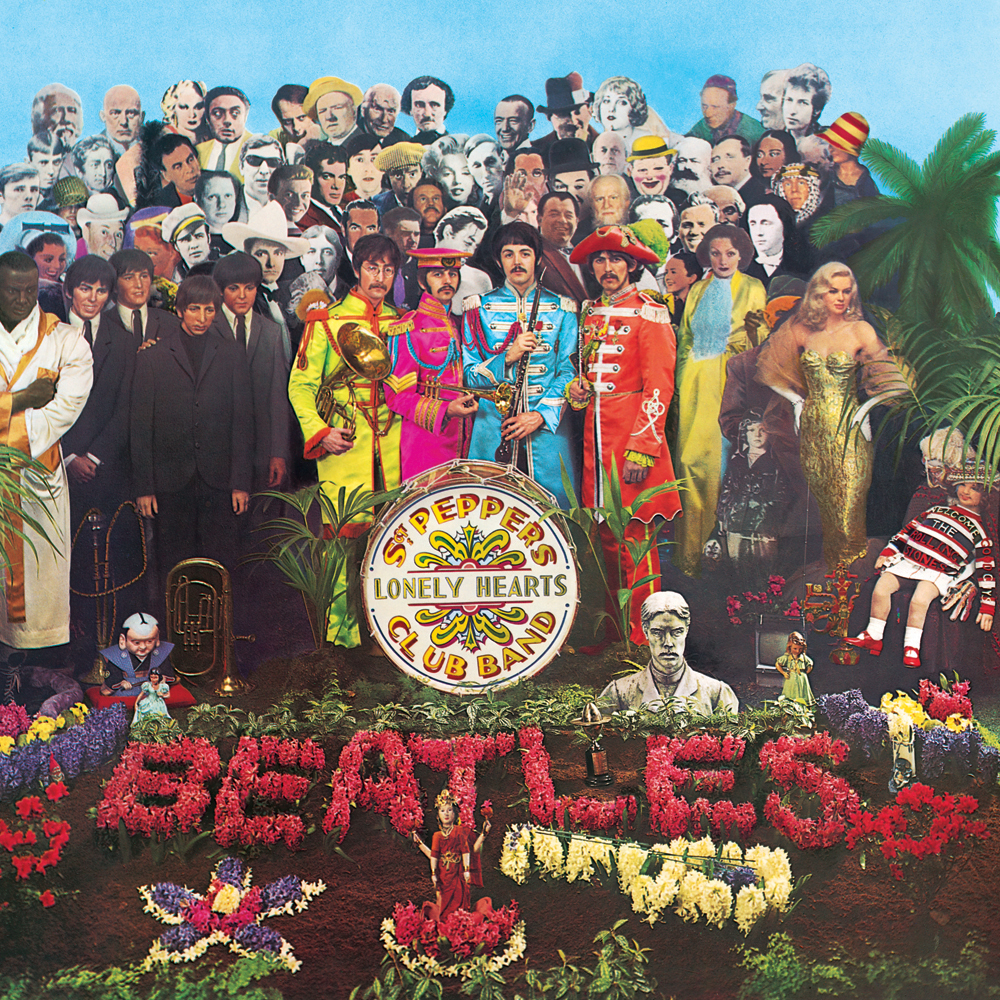
While Liverpudlian pop sensations The Beatles started out as loveable mop-tops, they soon became influenced by the Sixties counterculture of pot smoking and protest, and their music started going in radical new directions. This culminated in Sgt Pepper's Lonely Hearts Club Band, which is widely credited as being rock's first concept album.
The cover features two versions of the Beatles. One is the real group, dressed as the fictional Sgt Pepper's Lonely Hearts Club Band; the others are wax sculptures. But the real stars here are the life-sized cardboard cut-outs of famous people, from Karl Marx to Marilyn Monroe.
Designed by the pop artists Peter Blake (opens in new tab) and Jann Haworth (opens in new tab) and based on an ink drawing by Paul McCartney, this turned out to be one of the most expensive album covers in history, partly because they had to pay so many people to use their likenesses. It was also the first to feature printed lyrics.
03. The Velvet Underground & Nico (1967)
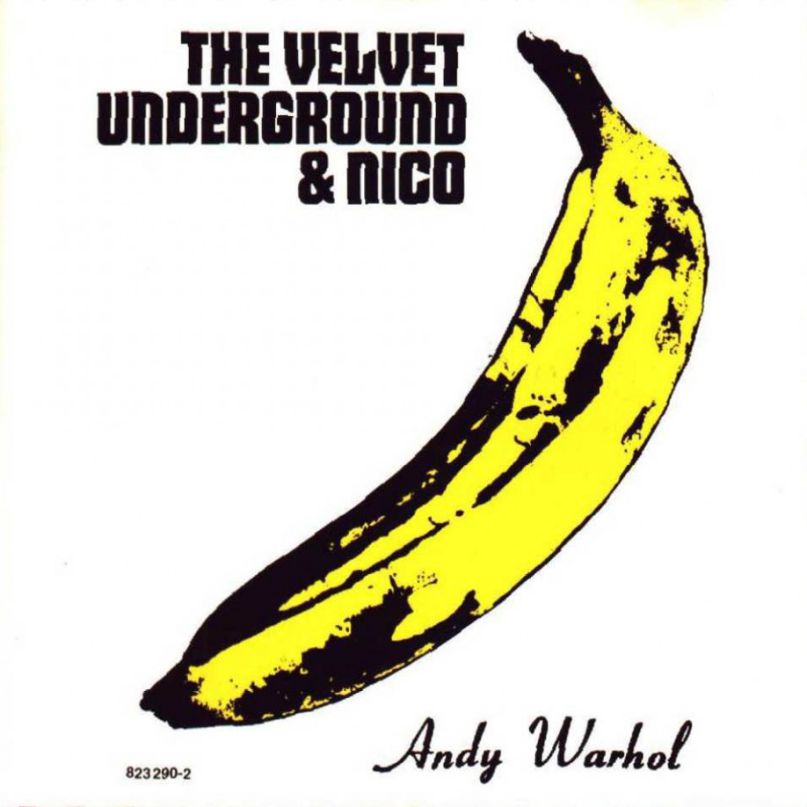
The first and best album by Velvet Underground, the psychedelic New York band fronted by Lou Reed, is known by fans as 'the banana album' due to the eye-catching illustration on its cover. This fruity drawing was the work of Pop Art (opens in new tab) icon Andy Warhol (opens in new tab), who happened to be the group's manager, while the cover was designed by Acy R. Lehman.
Early versions allowed you to peel back the banana skin to recover a flesh-coloured banana underneath (use your imagination). Most later reissues failed to include this expensive-to-produce feature, and so the original pressings are worth a small fortune on the collectors' market.
04. Dark Side of the Moon by Pink Floyd (1973)
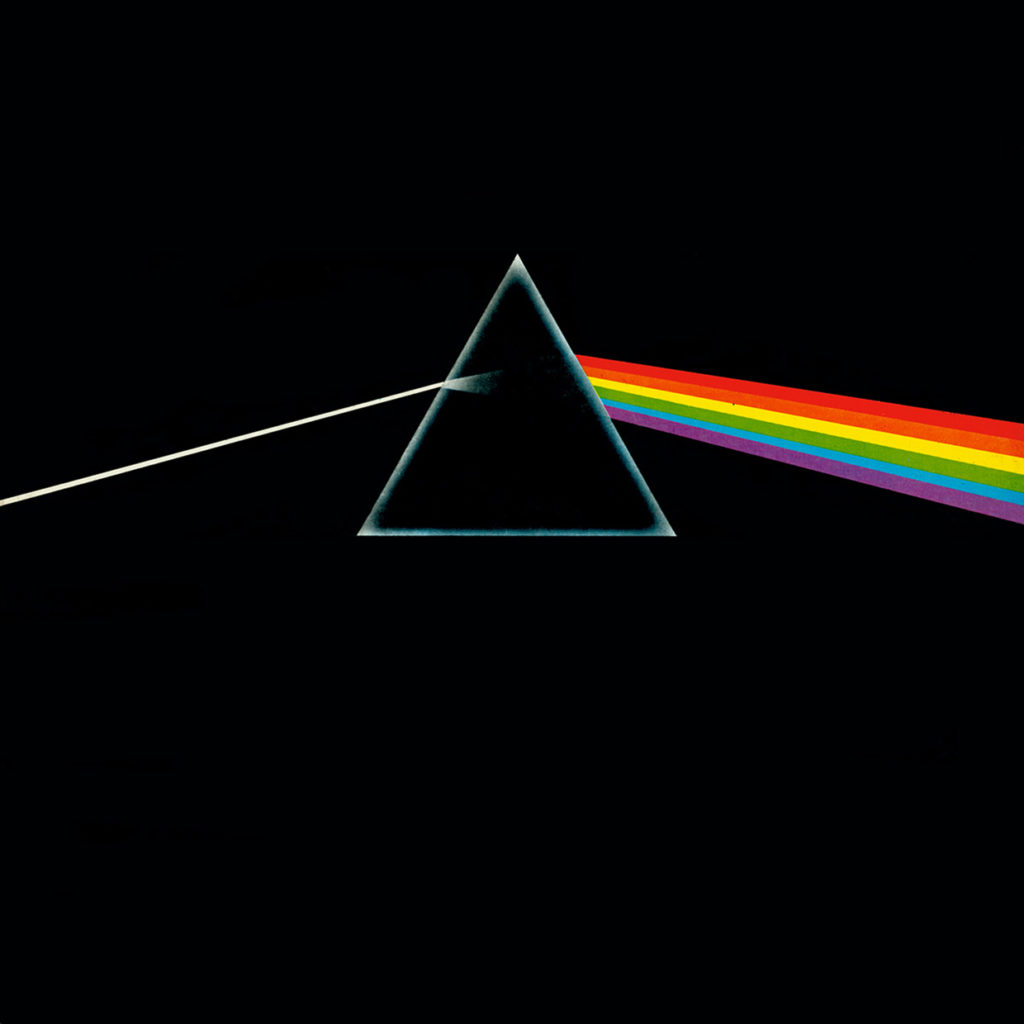
Even people who've never heard of British rock band Pink Floyd will probably recognise the iconic cover to their 1973 album Dark Side of the Moon, which shows white light passing through a prism to create a spectrum of colours. It was created by Aubrey Powell (opens in new tab) and Storm Thorgerson (opens in new tab) of Hipgnosis, the designers behind some of history's best-known album covers, including Led Zeppelin's Houses of the Holy, Black Sabbath's Never Say Die and The Scorpion's Lovedrive.
They came up with the concept, which was inspired by an image of a prism found in a photography book, after an all-night brainstorming session. The design raised eyebrows at the time for including neither the band's name nor the album's title.
05. Never Mind The Bollocks by the Sex Pistols (1977)

While the psychedelic era saw album covers commonly feature intricate, surreal and lavish illustrations, punk stripped everything to its bare essentials. And the debut album of Britain's loudest and angriest punk rockers Sex Pistols, designed by Jamie Reid (opens in new tab), was a true statement of intent.
The use of obscenity, cast in the kind of cut-out lettering commonly associated with criminal ransom notes, was shocking to audiences of the time. The effect was heightened by the sleeve's lurid colour palette, which was based on a series of stickers distributed by the Situationalist political movement (the originals read: 'This Store Welcomes Shoplifters').
The use of 'bollocks' (a term in British English that means both 'nonsense' and 'testicles') led to a police raid on a Virgin record store that stocked the record. In the resulting court case, Virgin was successfully defended from obscenity charges by John Mortimer, now best known as the author of Rumpole of the Bailey. As he left the courtroom, the group's singer, Johnny Rotten, joyfully exclaimed to a reporter: "Great! Bollocks is legal. Bollocks! Bollocks! Bollocks!"
06. Unknown Pleasures by Joy Division (1979)
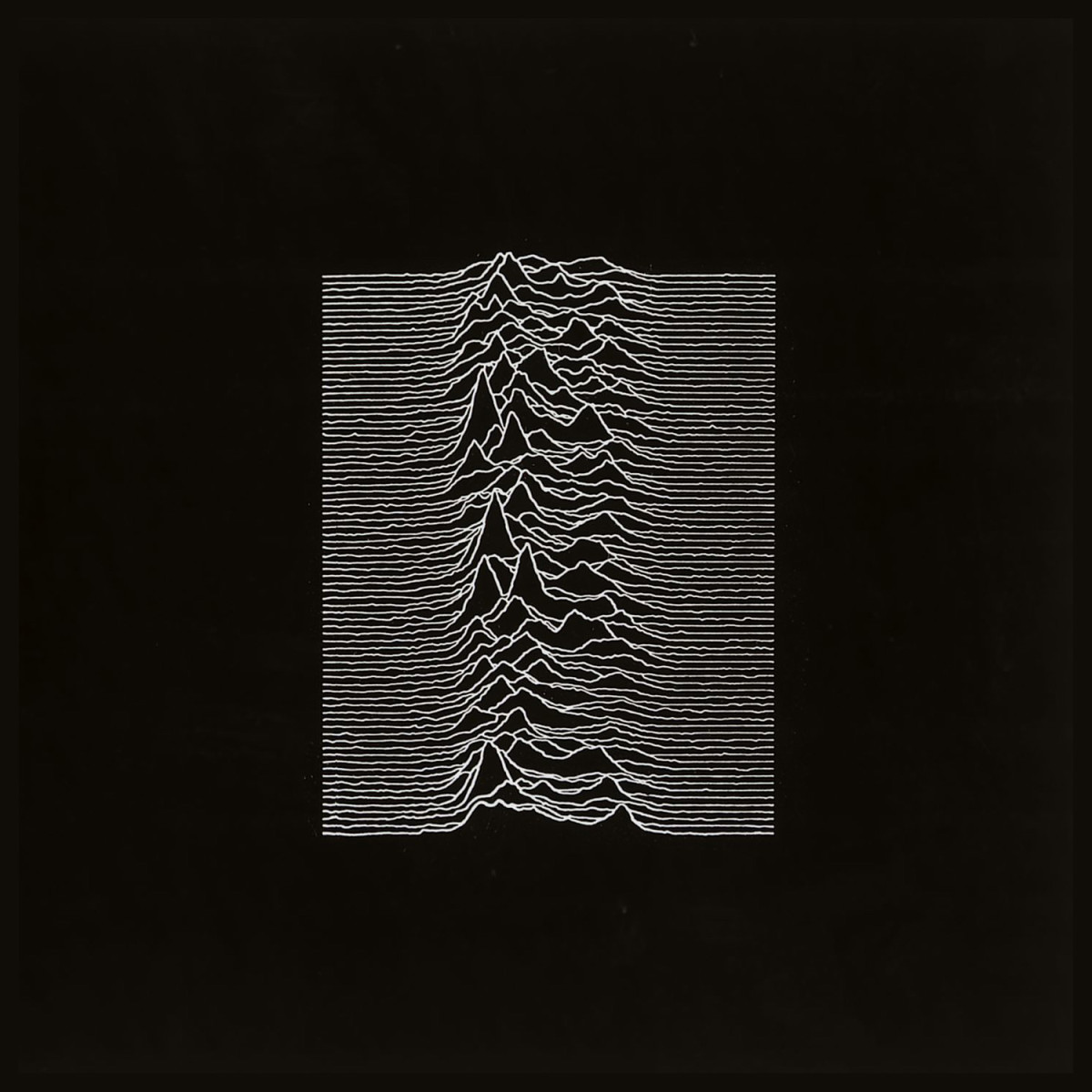
When Salford post-punk band Joy Division released its debut album, it didn't exactly set the world on fire. But today it's considered a classic, and its entrancing cover art, designed by Peter Saville (opens in new tab), adorns millions of T-shirts and posters worldwide.
It was the group's lead guitarist, Bernard Sumner, who originally chose the image. It's a visualisation of the radio waves emitted by a pulsar; a neutron star that is created after a dying sun collapses in on itself.
Originally named CP 1919, the pulsar in question had been discovered in November 1967 by student Jocelyn Bell Burnell and her supervisor Antony Hewish at Cambridge University. Sumnar found the image in the Cambridge Encyclopaedia of Science; Saville then reversed it from black-on-white to white-on-black and printed it on textured card.
07. Rio by Duran Duran (1982)
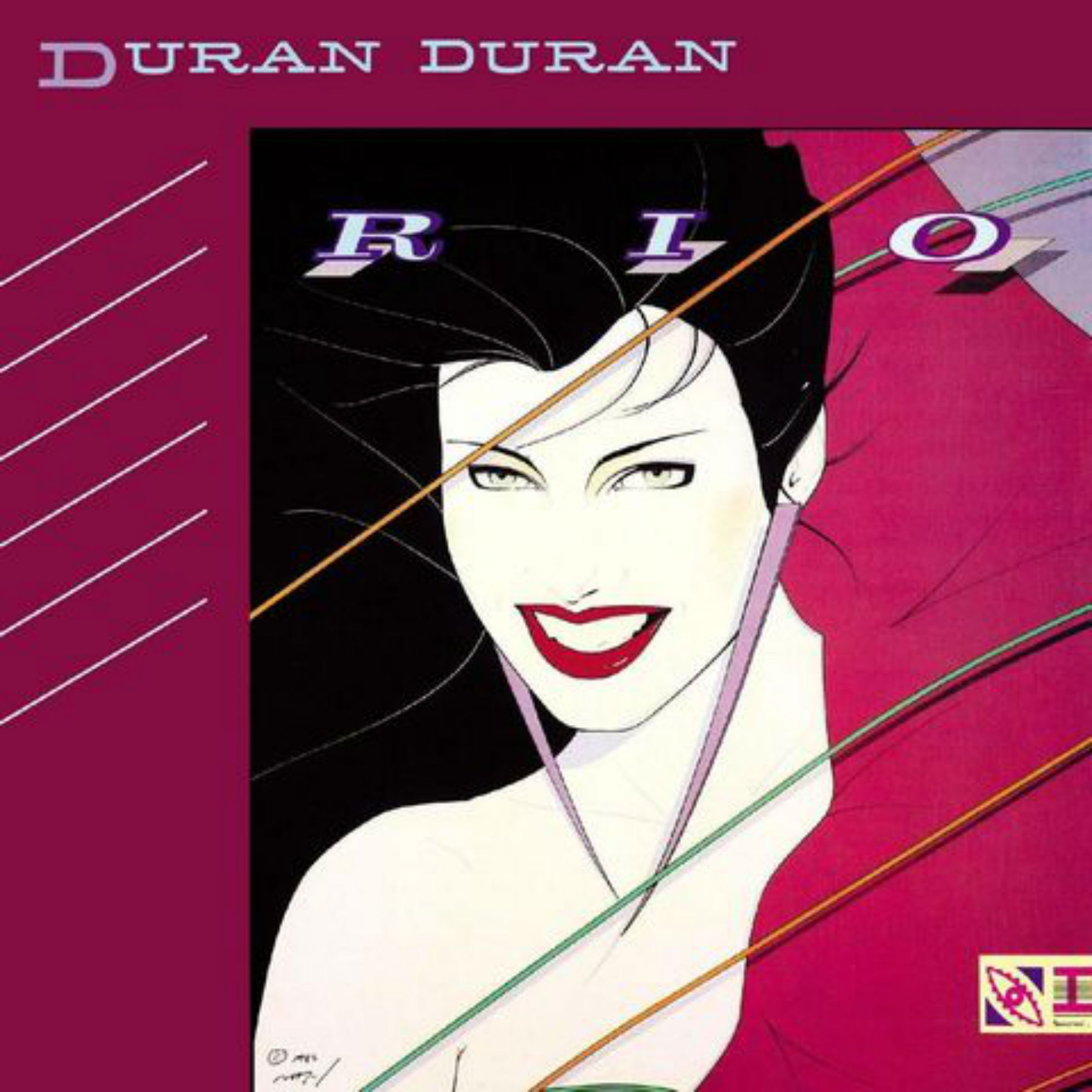
After all the bleak, moody aggression of seventies punk, many in the eighties were ready for the return of fun and glamour... but that didn't mean they wanted old-fashioned and cheesy. Duran Duran, a band from Birmingham, England, were among the leading lights of the New Romantic movement, which cleverly combined an art-school sensibility with the kind of pop-funk stylings a mainstream audience could actually dance to.
The cover design for their second studio album, Rio, pulls off the same trick. It was designed by Malcolm Garrett (opens in new tab) and illustrated by Patrick Nagel (opens in new tab), who was known for celebrating the female form in a style that combined the Art Deco tradition with contemporary fashion designs.
Nagel's depiction of the lead song's title character is beautifully minimalist, with an inventive colour palette that was instantly eye-catching and trend-defining.
08. War by U2 (1983)
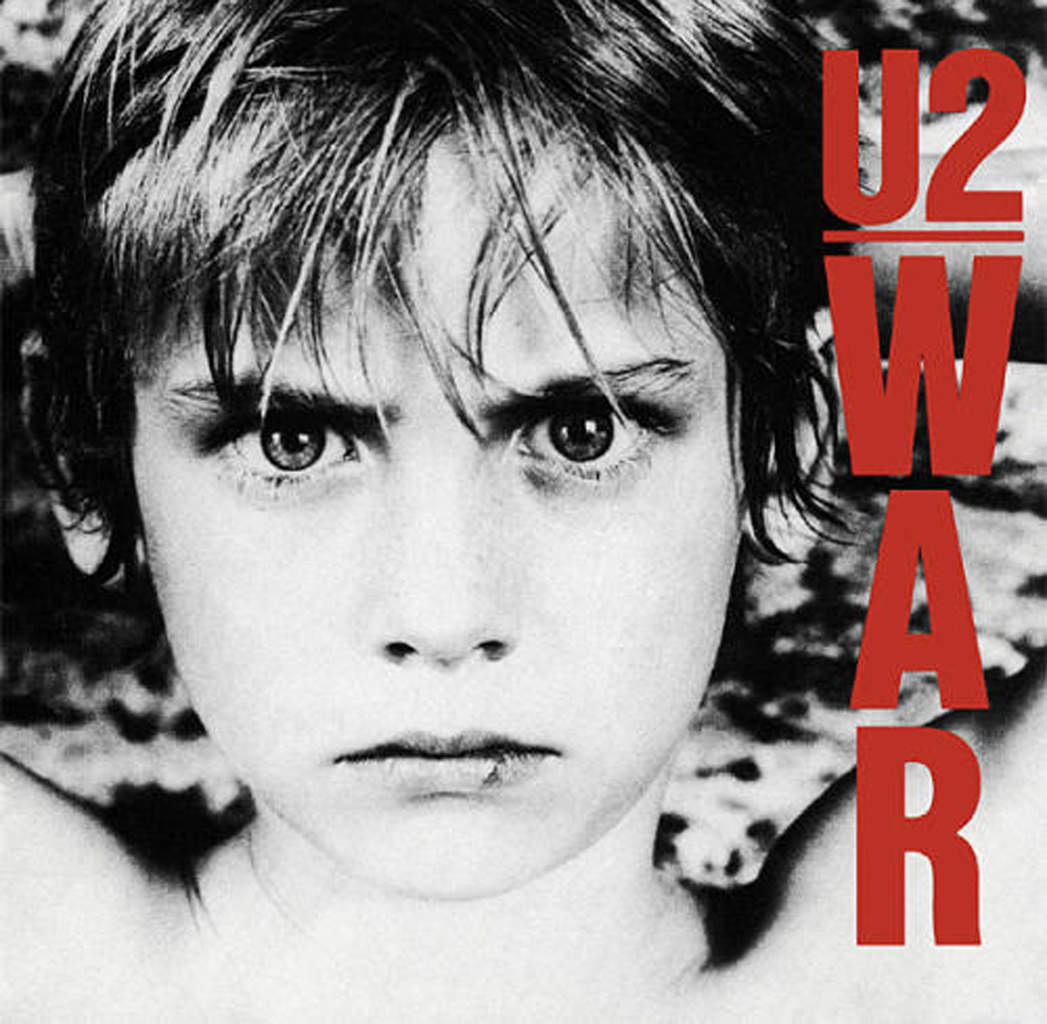
U2's singer Bono may nowadays be known for having dinner with Popes and Presidents. But while he's now Mr Mainstream, early U2 was raw, edgy and raucous. And with its controversial songs about war and conflict, like Sunday, Bloody Sunday, their third studio album could be considered the apex of their rebellious youth.
Rather than going the obvious route of picturing a battle scene, though, Irish graphic designer Steve Averill (opens in new tab) took the inspired decision to instead use a child, powerfully conveying the loss of innocence created by war. The boy staring intensely and unsettlingly at the camera is Peter Rowen (opens in new tab), the brother of the artist Guggi (opens in new tab), who is a friend of Bono's.
Rowen appeared on three U2 albums in total, and is now himself a professional photographer. He's even brought things full circle, by shooting U2 in concert.
09. Licensed to Ill by Beastie Boys (1986)
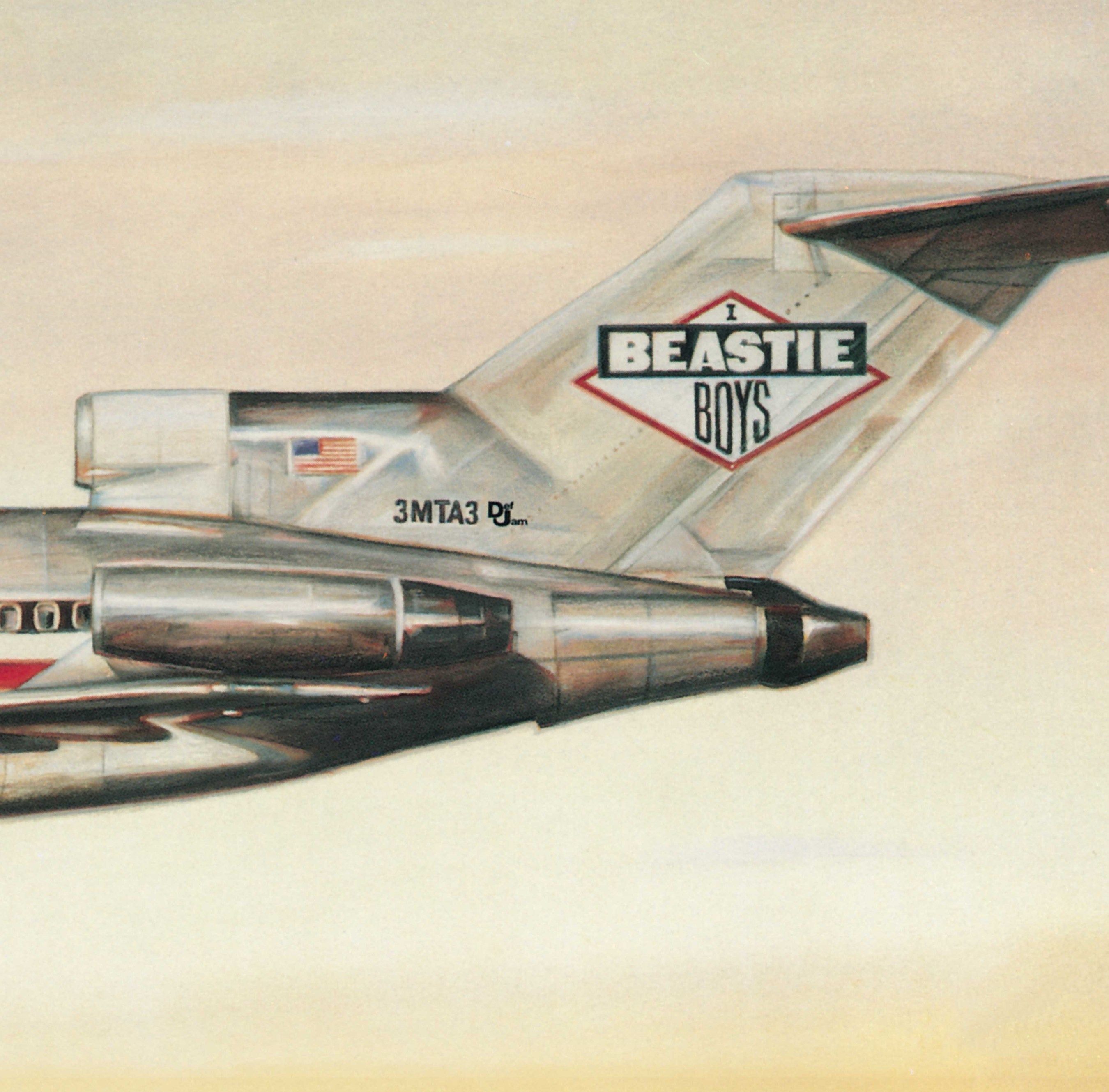
At a time when music was largely divided along genre and racial lines, three Jewish boys brought together rap and heavy rock in one album, without compromising on the raw, angry energy of either.
Designed by Steve Byram (opens in new tab) and illustrated by World B. Omes (opens in new tab), the cover concept for Licensed to Ill was basically a parody of Led Zeppelin's private jet; a symbol of bloated seventies rock excess that couldn't have been further removed from the boy-next-door antics of the Beastie Boys.
And just in case you needed the irony spelling out, the plane's tail number, 3MTA3, spells "Eat Me" backwards.
10. Fear of a Black Planet by Public Enemy (1990)
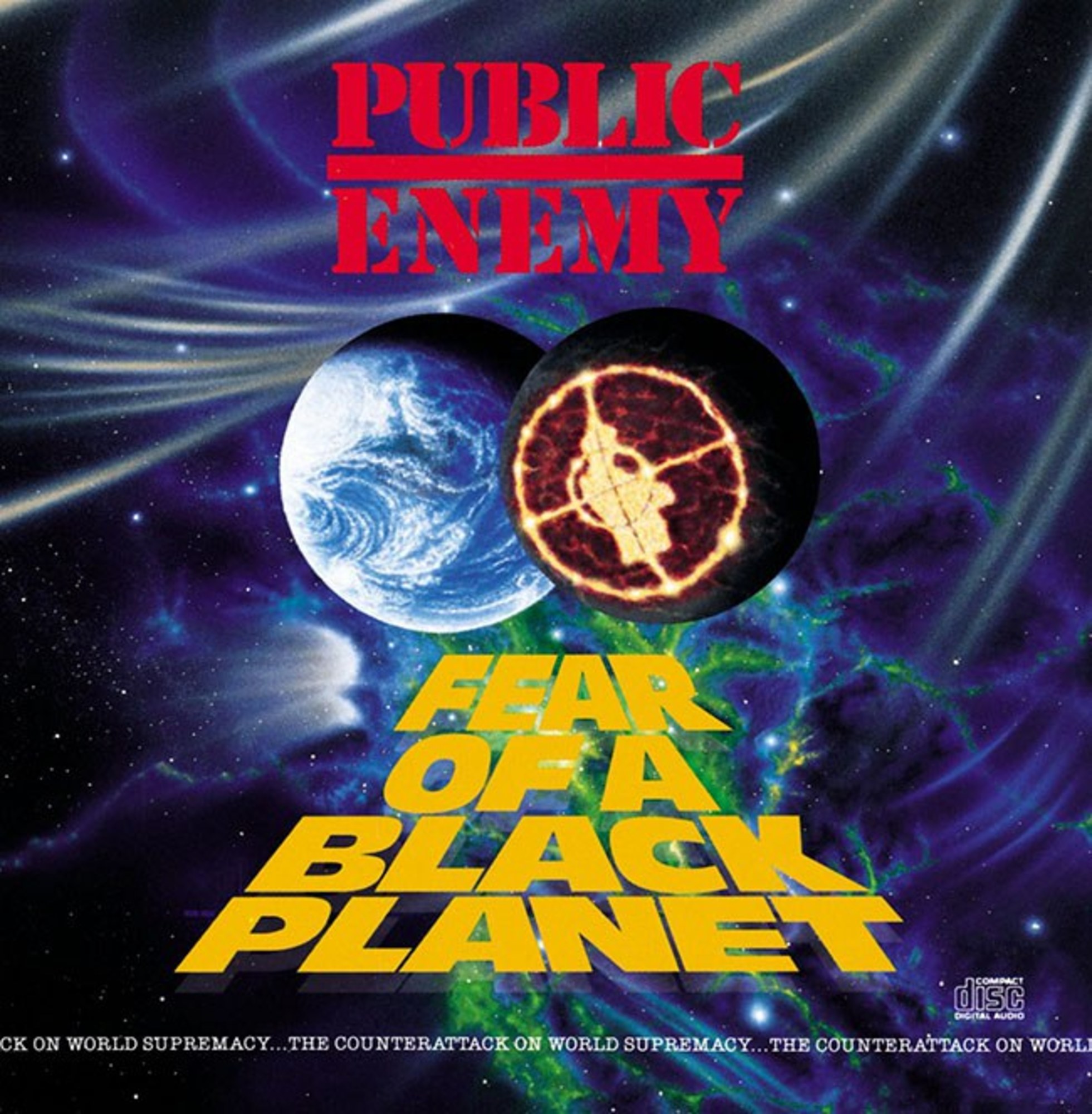
Musically and lyrically, Public Enemy's third studio album remains one of the most inventive and ambitious rap albums of all time. From the biting social commentary of 911 is a Joke, about the variance in police response times between black and white neighbourhoods, to the revolutionary rage of Fight the Power, this record changed the game and has arguably yet to be bettered.
The cover design, too, is a classic. Group leader Chuck D, who had himself studied graphic design at New York's Adelphi University, came up with the concept of two worlds (a 'black' planet and Earth) eclipsing. The group enlisted B.E. Johnson (opens in new tab), a NASA illustrator, to create the design, and the apocalyptic result is a fantastical commentary on the racial paranoia of white nationalism.
11. Nevermind by Nirvana (1991)
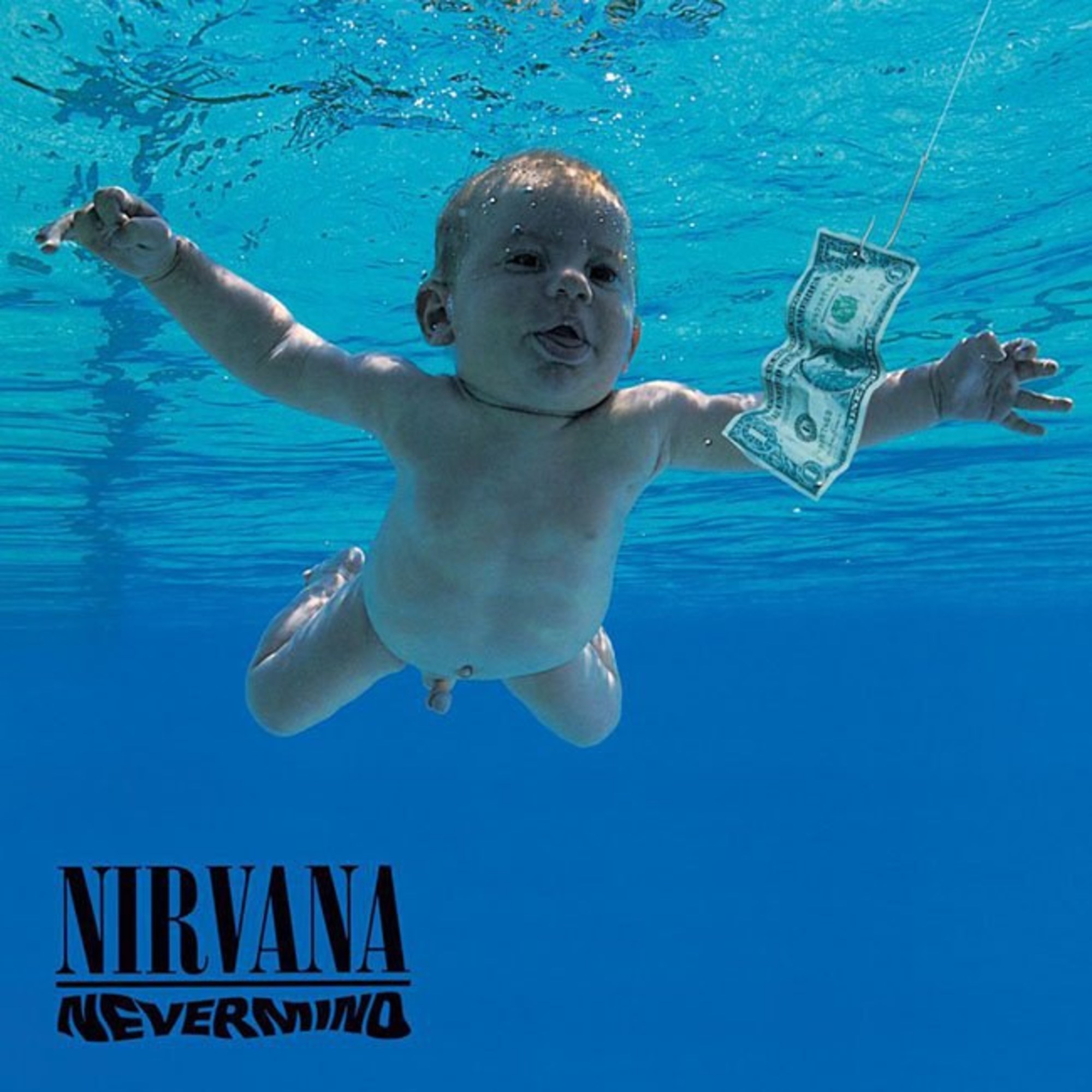
At the beginning of the 1990s, it seemed like rock music was starting to go stale and repeat itself. Then came grunge, which brought everything back to its basics and acted like a big 'reset' button, just as punk had done two decades earlier. Nirvana's second album brought grunge into the mainstream, following the success of their number one hit Smells Like Teen Spirit. And its unusual cover was attention-grabbing to say the least.
Singer Kurt Cobain had come up with the idea while watching a TV documentary on water births with drummer Dave Grohl. Geffen's art director Robert Fisher (opens in new tab) dug out some stock images of underwater births, but they were too graphic to put on an album and would have cost $7,500 to licence. So instead they commissioned photographer Kirk Weddle (opens in new tab) to shoot some bespoke images in a Pasadena swimming pool for just $1,000. (The dollar and fish hook were added later.)
The child he shot was four-month-old Spencer Elden, the son of one of Weddle's friends. He's now 27 and working as an artist in LA, while Weddle has continued to be an advertising photographer specialising in underwater work.
12. Screamadelica by Primal Scream (1991)
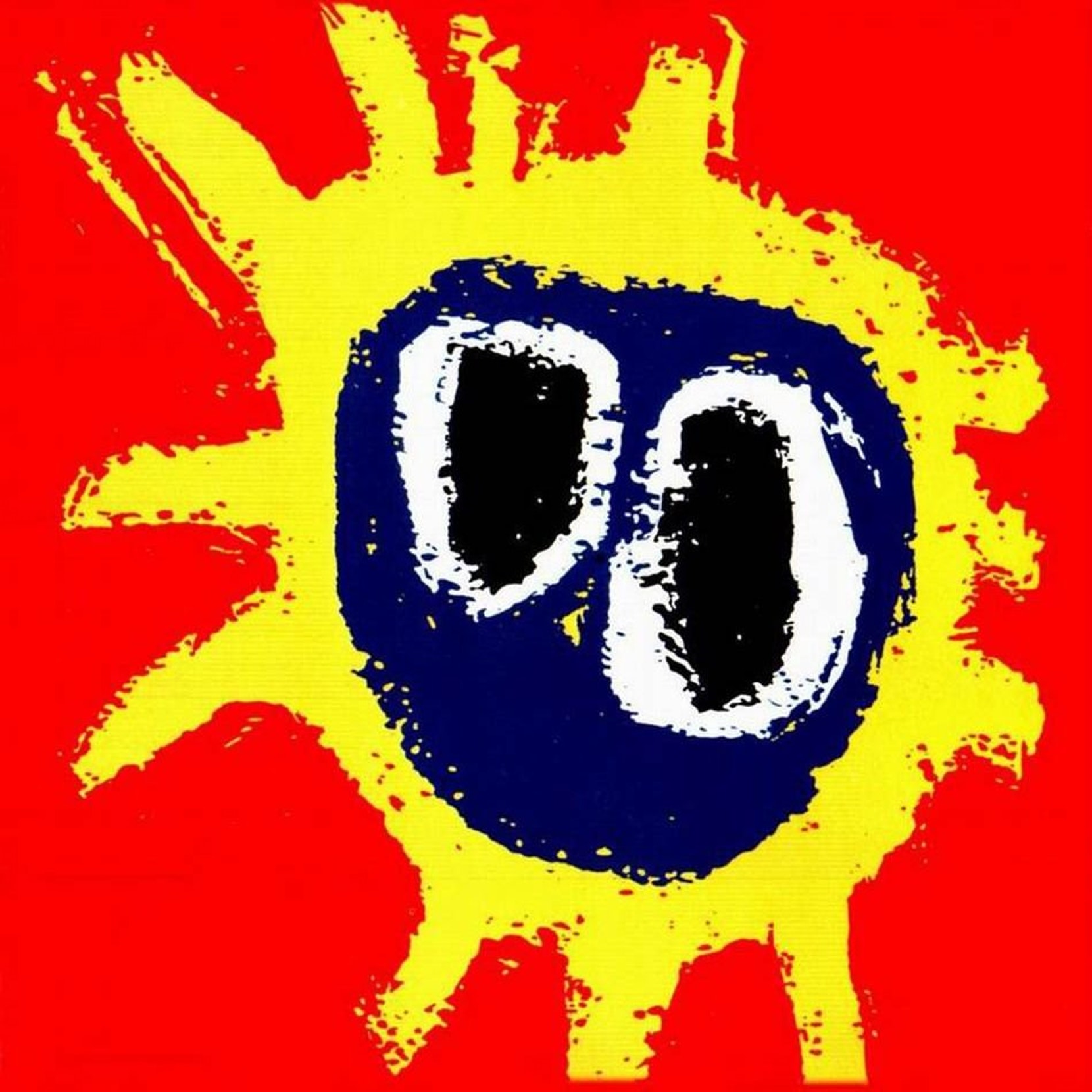
Throughout the 1980s, the divide between indie music and dance music couldn't have been more marked. Then came acid house, ecstasy, rave... and all of a sudden fans of moody rock music became much more open to the idea of repetitive beats. A major landmark in the resulting crossover was Primal Scream's third album, which brought together rock, psychedelia, dub, house and gospel in one glorious concoction.
Its cover was the work of Paul Cannell, a London artist known for combining a punk aesthetic with exuberant colours, using unusual media such as household undercoat paint and car body filler. The band's singer Bobby Gillespie took a detail from one of Cannell's paintings, altered the background colour to a hot red, and the classic 'sun' image was the result.
Tragically Cannell took his own life in 2005. But this classic cover, along with his work for bands like Manic Street Preachers, The Telescopes, Flowered Up and Shonen Knife, will surely live for an eternity. It was even recreated as an official postage stamp in 2010, as part of the Royal Mail's Classic Album covers collection (opens in new tab).
13. Parklife by Blur (1994)

As the 1990s progressed, British youngsters started to tire of ecstasy-fuelled raves, and a vacuum opened up in youth culture. This was quickly filled by a return to the old-fashioned pursuits of boozing and listening to rock bands... but with subtle dashes of post-modern irony to keep things interesting.
Best at managing this contradiction were Blur; middle-class student types who nonetheless appealed to the masses with their mockney accents, Kinks-influenced tunes and clever appropriation of working class culture. Parklife, their third studio album, saw them at the height of their powers, from Girls and Boys, which poked fun at Club 18-30 holidays, to the title track, which guest-starred Quadrophenia actor Phil Daniels to brilliant comic effect.
All this post-modern authenticity was topped off by a brilliant cover based on the unlikely topic of greyhound racing. (Other images Blur considered were a fruit and veg market stall, a betting shop window... you get the idea.)
The image used, shot by photographer Bob Thomas, was taken from a stock image library and was not, contrary to popular belief, shot in Walthamstow. The confusion comes because a separate shoot for the inside cover was carried out at the famous East London track, which has since been converted into flats.
14. Original Pirate Material by The Streets (2002)

When Mike Skinner, aka The Streets, made a rough and ready UK garage album in his bedroom, he was aiming it at typical fans of UK garage. Instead, his funny and poetic lyrics led him to be instantly adopted by middle-class intellectuals, a fact that baffles him to this day.
Skinner's embrace by the intelligensia may also have been subconsciously been inspired by the highbrow nature of his cover art. His debut album features an image titled Towering Inferno, shot in 1995 by German artist and photographer Rut Blees Luxemburg (opens in new tab). Part of a series called London: A Modern Project that focuses on the capital at night, the shot fits nicely into the "sex, drugs and on the dole" narrative spun by Skinner throughout his debut.
15. Fallen by Evanescence (2003)
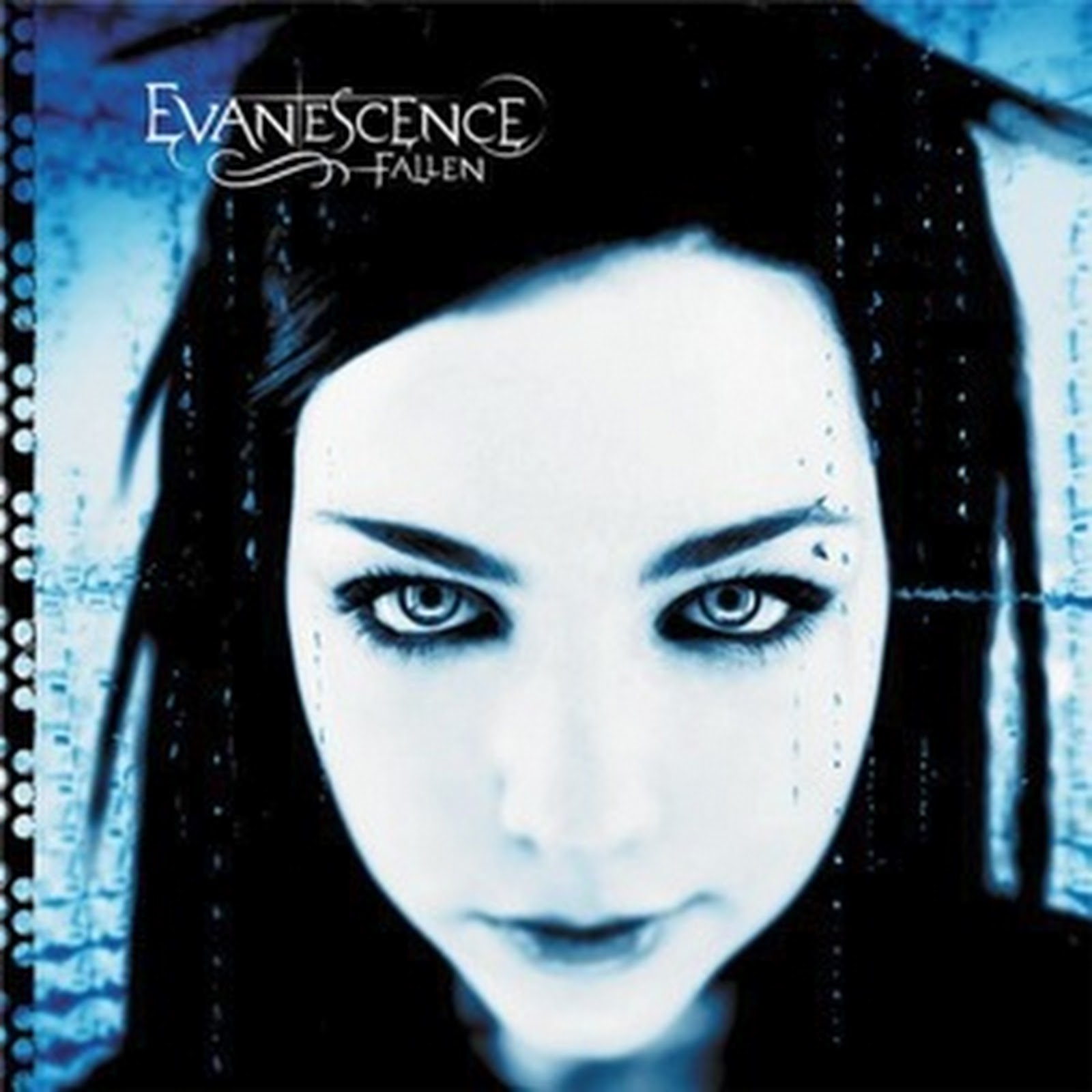
One of the best-selling albums of the 2000s and the winner of two Grammys, Fallen was the debut of Evanescence, a genre-defying Christian band that combined elements of nu metal, alternative metal and goth. But its influence went way beyond 'just' music. Countless youngsters since its release have testified to the way its lyrics, which deal with subjects of alienation, depression, suicide and death, have helped them deal with the angst of 'feeling different' from their peers.
Seen in that light, the album's cover art, featuring frontwoman Amy Lee in defiant alt-girl pose, was perfectly chosen. The singer is staring right at the viewer, provoking a feeling of empathy and shared experience, but at the same time the blurry nature of the image and the cold, harsh colour palette speak to feelings of helplessness and isolation. It's not necessarily the happiest of scenes, but for many fans, it's been an essential and life-enhancing one.
16. American Idiot by Green Day (2004)
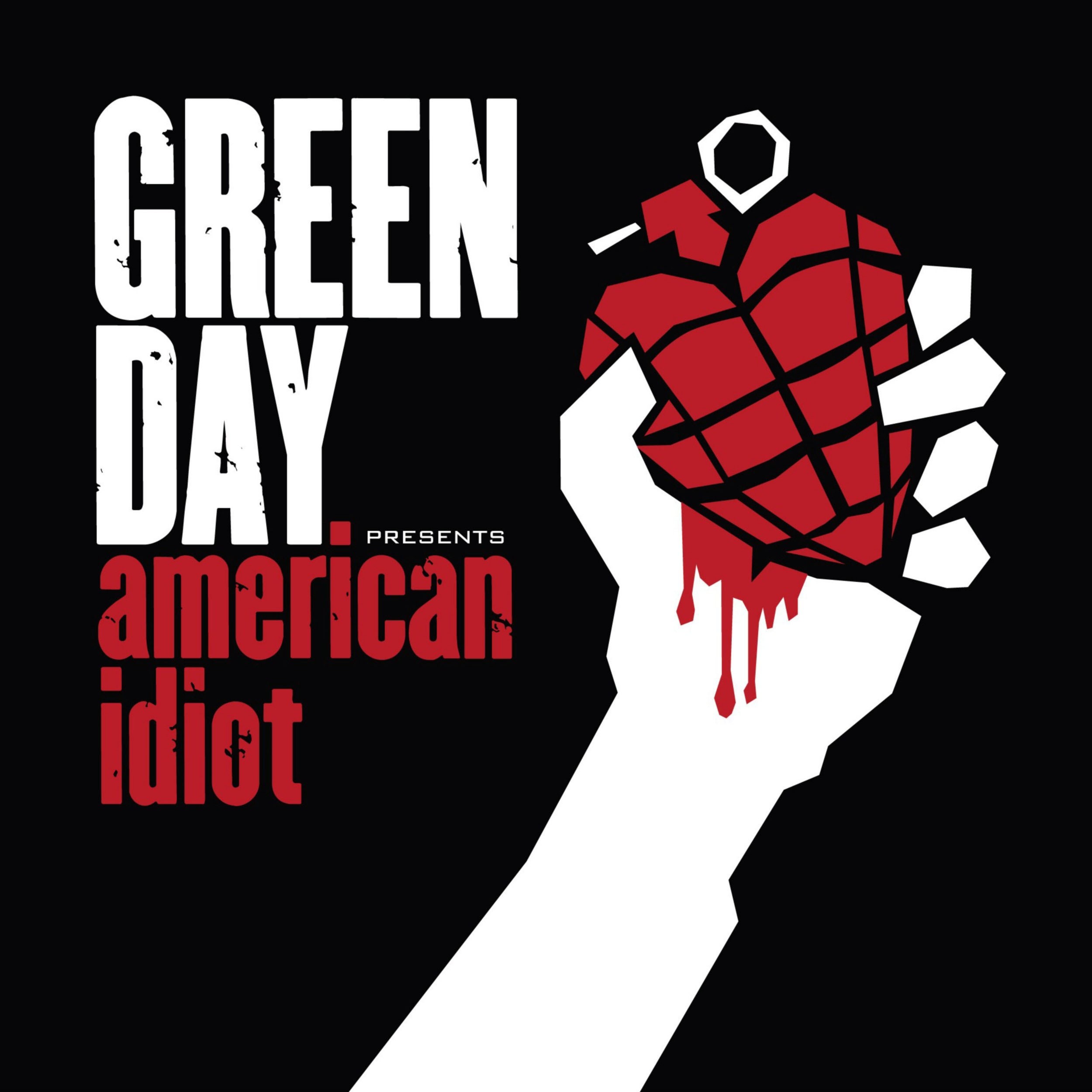
A punk rock opera might sound like a contradiction in terms, but Green Day went ahead and did it anyway. This concept album follows the story of Jesus of Suburbia, a teenage anti-hero, and it spawned five hit singles, including the incendiary title track; a stinging critique of right-wing American media that has arguably never been bettered.
A game-changing album demands attention-grabbing artwork, and this cover design, featuring a heart-shaped hand grenade held in a blood-soaked fist, delivers it in spades. It was created by Chris Bilheimer (opens in new tab), an art director who studied at the University of Georgia with R.E.M. singer Michael Stipe.
The design takes in a number of influences, and is said to be inspired by Chinese communist propaganda art, a lyric from the song She's a Rebel ('he's holding on my heart like a hand grenade"), and Saul Bass's poster for the 1955 film The Man with the Golden Arm.
17. Demon Days by Gorillaz (2005)

As the world strode confidently from the 20th to the 21st century, suddenly everything was going from analogue to digital. And Blur singer Damon Albarn and Jamie Hewlett (opens in new tab), the comic artist behind Tank Girl, decided to get ahead of the curve by forming Gorillaz (opens in new tab), the world's first virtual band.
Combining hip-hop and electronica, the musical output of the band was groundbreaking enough, but they further excited audiences and the media by presenting themselves in the form of cartoon characters, from magazine covers to music videos to websites. At a time when most people were just learning what an avatar was, it was a clever idea, and one that effortlessly translated to the cover of this, their second and seminal album.
18. Born to Die by Lana del Rey (2012)
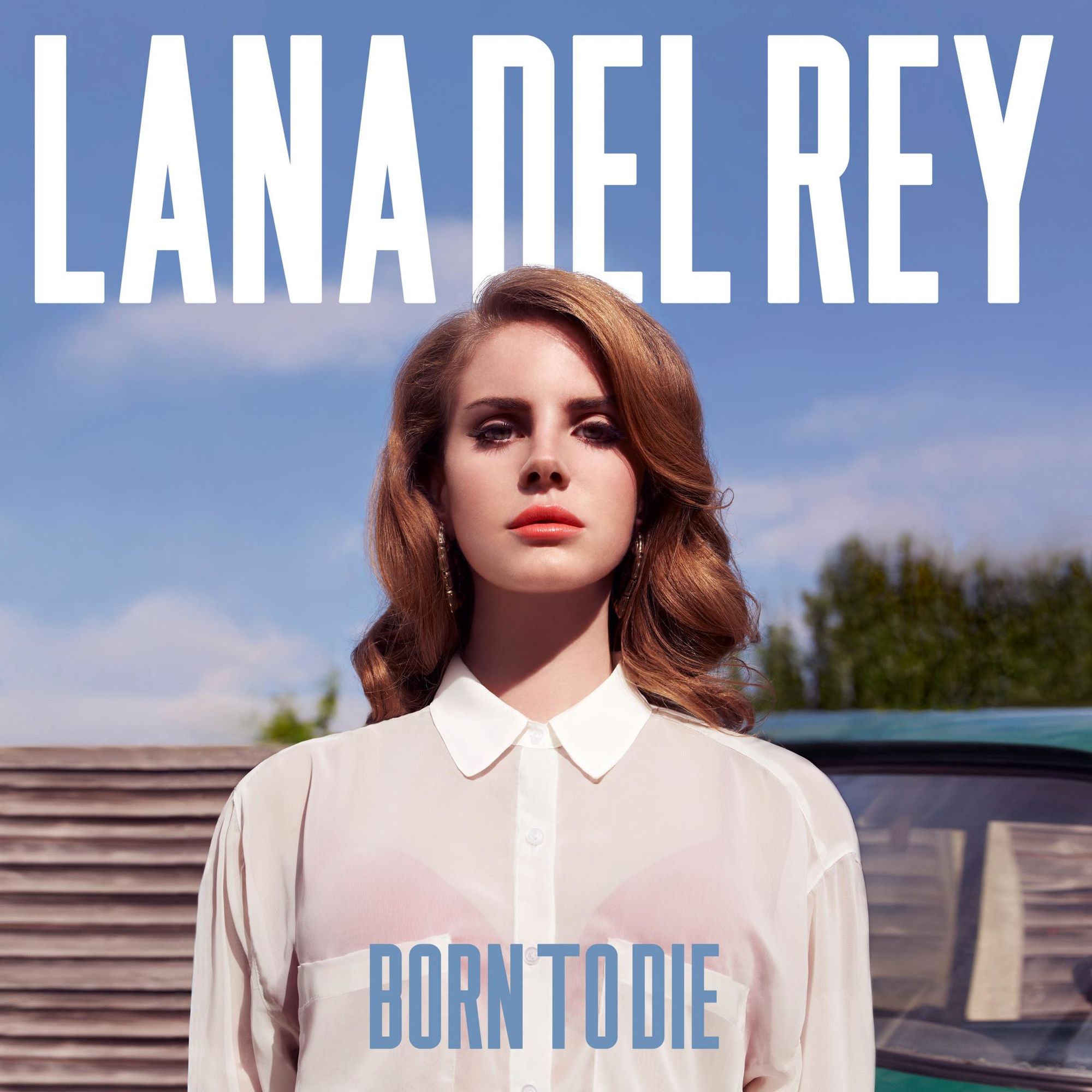
One of only three albums released by a female artist to have spent more than 300 weeks on the Billboard 200, Born to Die combines elements of indie pop and trip-hop with New York singer Lana del Rey's haunting vocals in a way that's far greater than the sum of its parts. And the cover, art-directed by David Bowden (opens in new tab), was suitably and beautifully epic.
The impactful design combines an arrestingly mournful image of the singer, photographed by Nicole Nodland (opens in new tab), with big and bold typography based on a bespoke font, adding a truly cinematic feel to the design.
19. 1989 by Taylor Swift (2014)
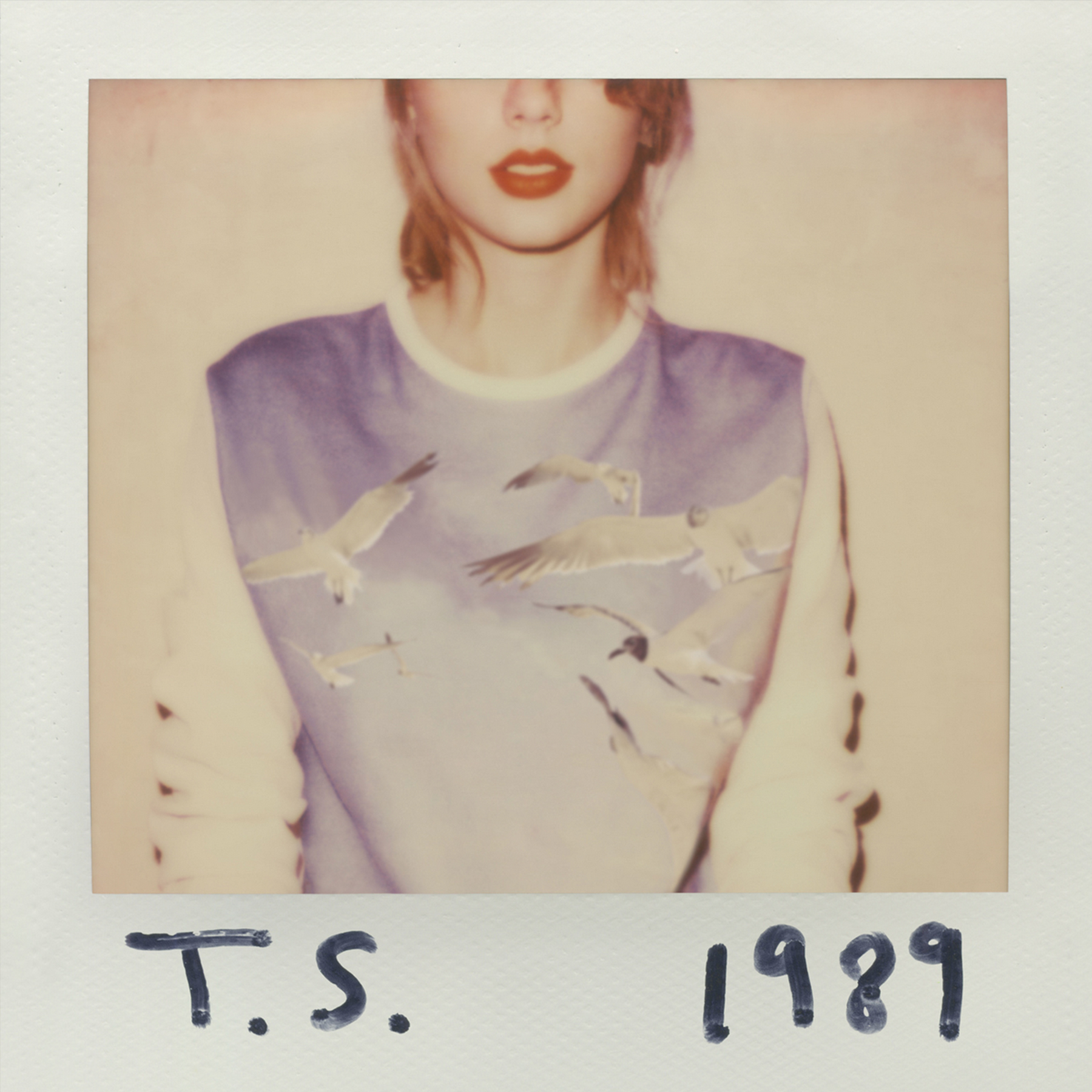
One of the biggest stars of the decade, country-turned-pop singer Taylor Swift has won fans by being open and personal about herself, and the cover of her first 'pure' pop album, 1989, fits perfectly into that narrative.
Light years away from the pouting, airbrushed glamour shots of her rivals, it features just a simple Polaroid of the singer, cut off at the eyes, with T.S. 1989 (the year of her birth) scrawled underneath. Nothing complicated, nothing overblown... and all the better to make fans feel connected to 'pop's everywoman'.
20. Lemonade by Beyonce (2016)
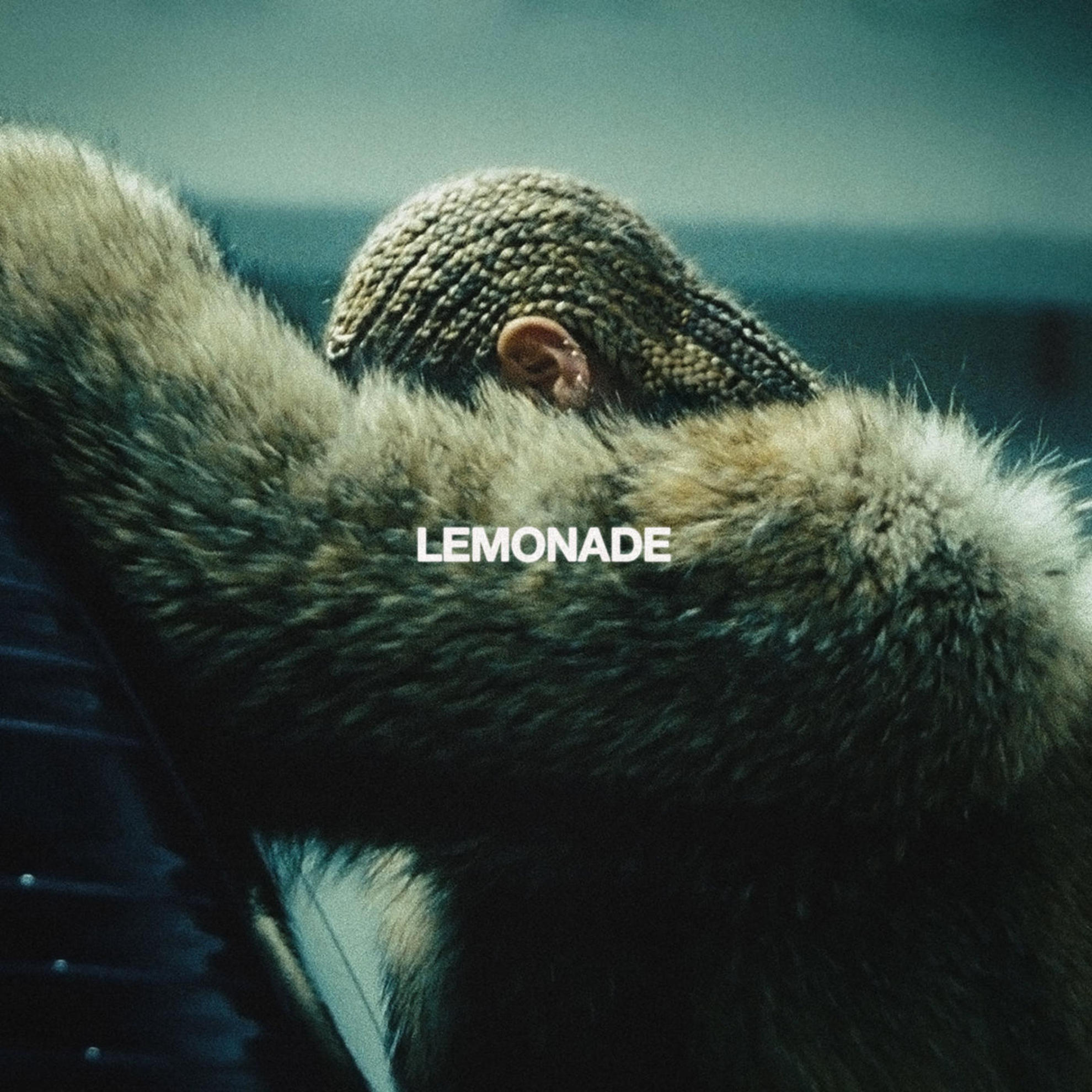
Let's be frank; in the modern era, with streaming taking over from downloads and social sharing replacing record-store browsing, album artwork has declined in importance. But if an artist is big enough, it still makes an impact, and few artists have been bigger in the 2010s than Beyonce.
In a sign of changing times, the singer's sixth album, Lemonade, was first made available through Beyoncé's co-owned streaming service Tidal (opens in new tab), a day before being released for digital and physical purchase. The cover shows the singer standing next to a car, wearing a fur coat and cornrow braids, hiding her face behind her arm.
It's a still from the shooting of the Don't Hurt Yourself video, directed by Beyonce and Kahlil Joseph (opens in new tab). But there's no official explanation about why this particular shot was chosen, leaving fans to speculate on the meaning of the cornrows (symbolising black culture?), fur coat (symbolising fame and riches?) and hidden face (symbolising inner turmoil?).
In a social media age in which being talked about seems to be the main aim of all celebrities, from pop stars to Presidents, this may be the perfect album cover for our times.
Related articles:
- The 20 best album covers from the '70s (opens in new tab)
- 7 must-read books for design students (opens in new tab)
- 27 inspiring examples of vintage poster design (opens in new tab)

Thank you for reading 5 articles this month* Join now for unlimited access
Enjoy your first month for just £1 / $1 / €1
*Read 5 free articles per month without a subscription

Join now for unlimited access
Try first month for just £1 / $1 / €1
Related articles
Source: https://www.creativebloq.com/features/the-20-best-album-covers-of-all-time
0 Response to "Nickelback Feed the Machine in This Moment Ritual Album Cover"
Post a Comment